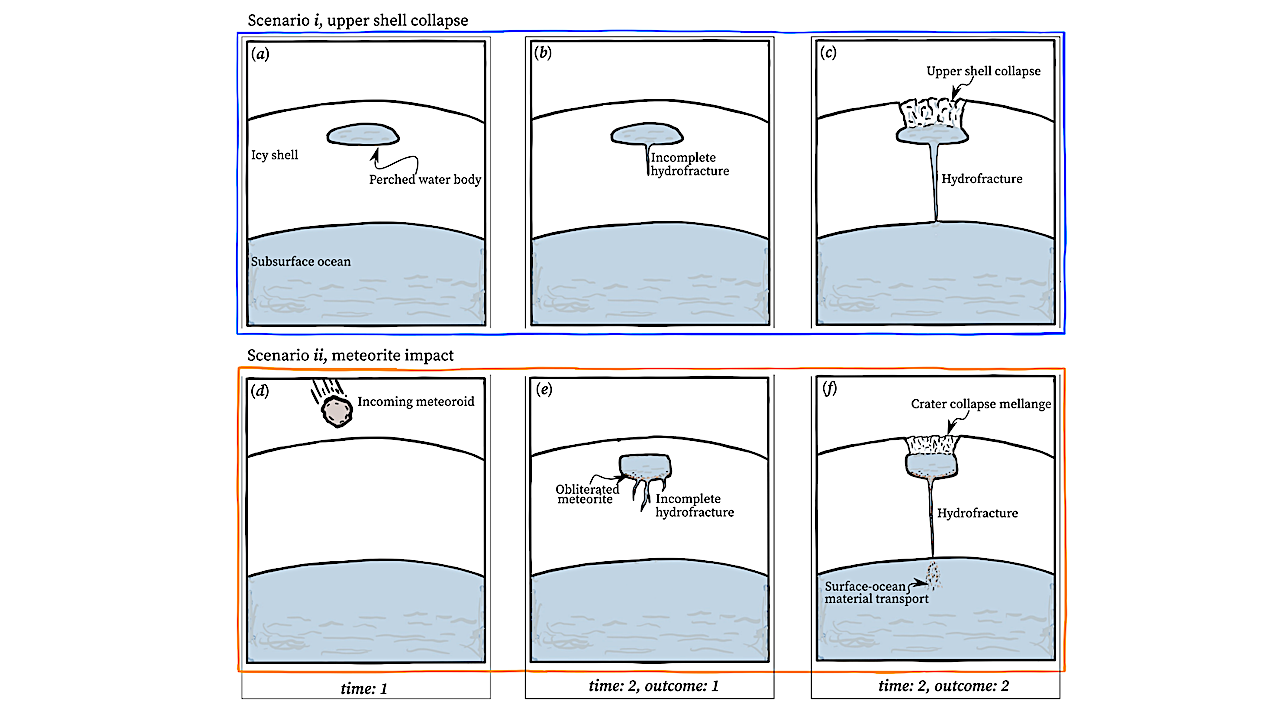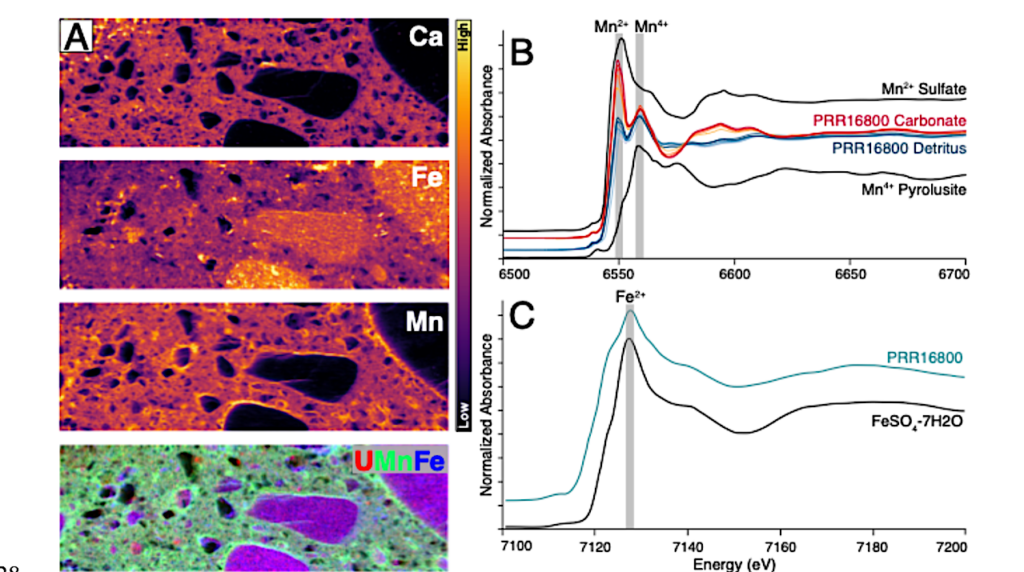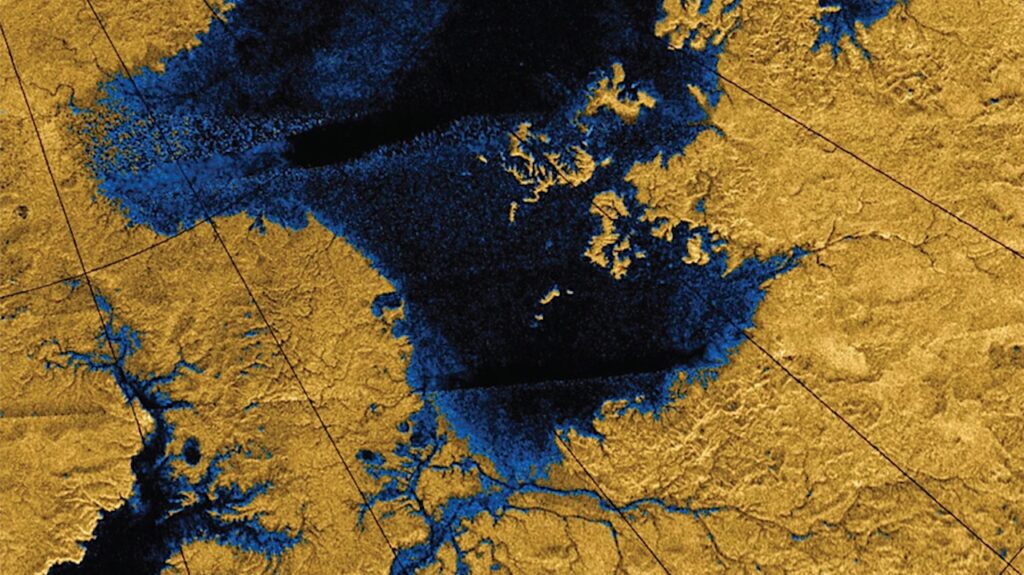Rapid Hydrofracture of Icy Moon Shells: Insights From Glaciology

Europa’s surface exhibits many regions of complex topography termed ‘chaos terrains’. One set of hypotheses for chaos terrain formation requires upward migration of liquid water from perched water bodies within the icy shell formed by convection and tidal heating.
However, consideration of the behavior of terrestrial ice sheets suggests the upwards movement of water from englacial water bodies is uncommon. Instead, rapid downwards hydrofracture from supraglacial lakes – unbounded given a sufficient volume of water – can occur in relatively low tensile stress states given a sufficiently deep initial fracture due to the negative relative buoyancy of water.
I suggest that downwards, not upwards, fracture may be more reasonable for perched water bodies but show that full hydrofracture is unlikely if the perched water body is located beneath a mechanically strong icy lid. However, full hydrofracture is possible in the event of lid break up over a perched water body and likely in the event of a meteor impact that generates sufficient meltwater and a tensile shock.
This provides a possible mechanism for the transfer of biologically important nutrients to the subsurface ocean and the formation of chaos terrains.
Robert Law
Subjects: Earth and Planetary Astrophysics (astro-ph.EP); Geophysics (physics.geo-ph)
Cite as: arXiv:2403.09888 [astro-ph.EP] (or arXiv:2403.09888v3 [astro-ph.EP] for this version)
https://doi.org/10.48550/arXiv.2403.09888
Focus to learn more
Submission history
From: Robert Law Dr
[v1] Thu, 14 Mar 2024 21:46:27 UTC (2,507 KB)
[v2] Wed, 20 Mar 2024 18:49:57 UTC (4,268 KB)
[v3] Thu, 6 Feb 2025 16:39:56 UTC (5,731 KB)
https://arxiv.org/abs/2403.09888
Astrobiology,









